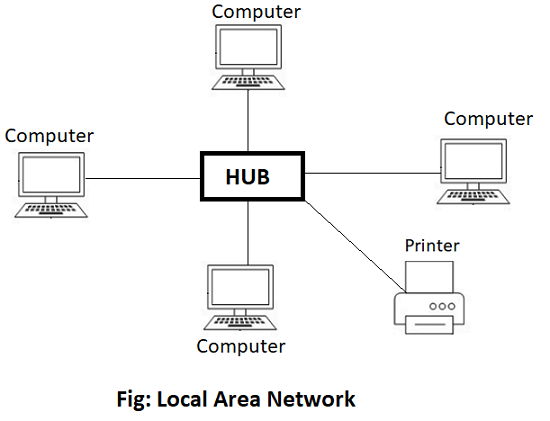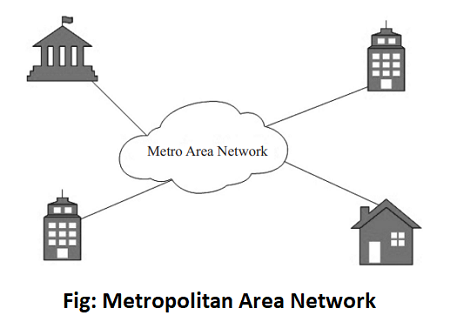Table of Contents
What is Computer Network?
Computers are generally used for the purpose of storing and processing data i.e. computers act as storehouses of data and information. In order to share this information with other computers, some mode of communication is required. The communication could be materialized by interconnecting the computers through cables, satellites, or any other communication link. These interconnected computer systems are called computer networks. A computer network may also be defined as an interconnection of autonomous computers. Two computers are said to be interconnected if they can share or exchange information. The term autonomous means that each computer is a complete unit in itself. There is no master/slave relationship between the computers. People can transfer or receive information at minimum cost and time, using computer networks. The Internet is a computer network that millions of people use every day. Other shared resources can include a printer or a file server. The Internet itself can be considered a computer network.

Characteristics of Communication:
The characteristics of effective communication in computer networks are given below-
- Delivery- Data must be delivered at the correct destination.
- Accuracy- Data must be delivered error-free.
- Timeliness- Data must be delivered on time.
Need for Computer Network:
USSR and USA were involved in a cold war in 1960. To send some urgent messages to its armed forces, the USA used the medium of electronic text to communicate with its head offices. Similarly, the disaster of Titanic could have been prevented or the rescue operations could have been intensified, had the communication been done on time. It’s very important to have a good communication network. It serves several purposes like keeping you updated with election results, Nasdaq 100 in the share market, launching of a new product, etc.
Components of a Computer Network:
The basic components of a computer network are given below-
(1) Data- It consists of information that is to be communicated.
(2) Sender- It sends the message.
(3) Receiver- It receives the message.
(4) Network Protocol- A network protocol defines rules and conventions for communication between network devices. Network protocols include mechanisms for devices to identify and make connections with each other. There are several protocols which are given below-
- File Transfer Protocol (FTP) defines the set of rules to transfer any type of file on a TCP/IP based network.
- Transmission Control Protocol (TCP) first establishes a connection between the sender and the receiver like a telephone and then sends the message by breaking up the message into small packets.
- The Internet Protocol (IP) part is responsible for handling the address of the destination computer so that each packet is routed (sent) to its proper destination.
- Hypertext is a well-organized documentation system that uses hyperlinks to link the pages in the text documents. Hypertext Transfer Protocol (HTTP) works on a client-server model.
- Hypertext Transfer Protocol Secure (HTTPS) is a communication protocol for secure communication over a computer network.
(5) Transmission Medium- It carries data from the sender to the receiver. The transmission media can be wired (also known as guided media) or wireless (also known as unguided media).
Types of Computer Networks:
A network is categorized according to its size, the distance it covers, and the link used for interconnection. Primarily, computer networks are categorized into local area network, metropolitan area network, and wide area network.
Local Area Network (LAN):
LAN is limited only to a small geographical area such as a home, an office, or a building. The primary aim of a local area network is to share resources (hardware or software) among different users. For example- the users in a local area network can share information, data, peripheral devices (such as printers, modems, hard disk), and so on. LANs are typically used for a single site where people need to share resources among themselves but not with the rest of the outside world. Think of an office or a building where everybody should be able to access files on a central server or be able to print a document to one or more central printers. Those tasks should be easy for everybody working in the same office or building, but you would not want somebody just walking outside to be able to send a document to the printer from their cell phone. In a LAN, one computer is selected as the file server which controls and stores all the software shared by different computers in the network. All the other computers, which are attached to the file server, are known as workstations. These workstations have their own software. The workstations and the file servers in a LAN are connected using cables. If a local area network, or LAN, is entirely wireless, it is referred to as a Wireless Local Area Network or WLAN.

Metropolitan Area Network (MAN):
MAN is consisting of a computer network across an entire city, college campus, or a small region. It may be a single network or maybe a collection of a number of LANs. This network uses fiber-optic cables for communication. For example, a company uses a MAN to connect different offices throughout the city. The objective of a metropolitan area network is to share resources and information among different users in the city.

Wide Area Network (WAN):
A Wide Area Network is a computer network that spans a large geographical area. It uses dedicated or switched connections to link computers in geographically remote locations. WANs are implemented to connect a large number of LANs and MANs. Due to this reason, it is possible to see a large number of heterogeneous components in a wide area network. Different communication media are used and the network spreads across several national boundaries. Computers connected to a WAN are often connected to a public network. They can also be connected through leased lines or satellite links. WAN is mostly used by governments or large concerns because of the huge investment made to implement them. The primary objective of a Wide Area Network is to exchange information quickly and in a cost-effective manner.

Advantages of Computer Network:
The following are the advantages of Computer Networks-
(1) Information can easily be shared. For example- when we connect to the Internet and open a website on our computer, we access information that is not stored in our own computers. In such a networked system, all information is stored on a central and powerful computer known as a server. All other computers in the network can easily access information from the server as if it was located on their own computer.
(2) Computer Network helps in staying updated with the events in and around the world.
(3) It also helps in sharing resources. For example- in an office having three to eight computers and one printer, in the absence of a network, only the computer that is connected to the printer can be used to print data. If others have to access the printer, then they would first need to transfer their data over to the computer connected to the printer. Contrastive to this, in a networked environment, the printer can be shared on the network and every computer on the network can easily access the printer without having the need to transfer data.
(4) Interaction among people around the world becomes easy through chatting and video-conferencing.
(5) Email allows us to send or receive letters effortlessly.









Comments (No)